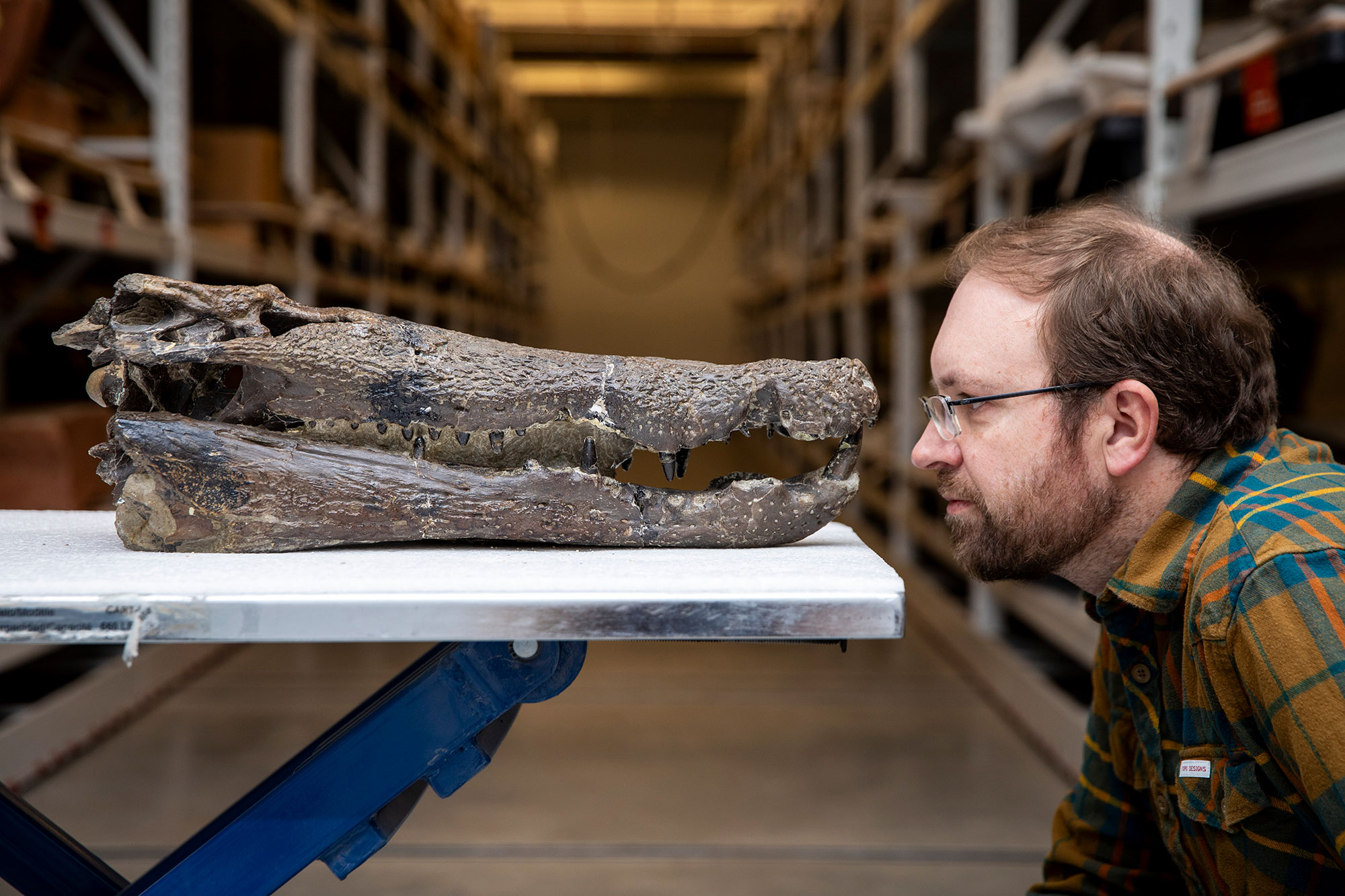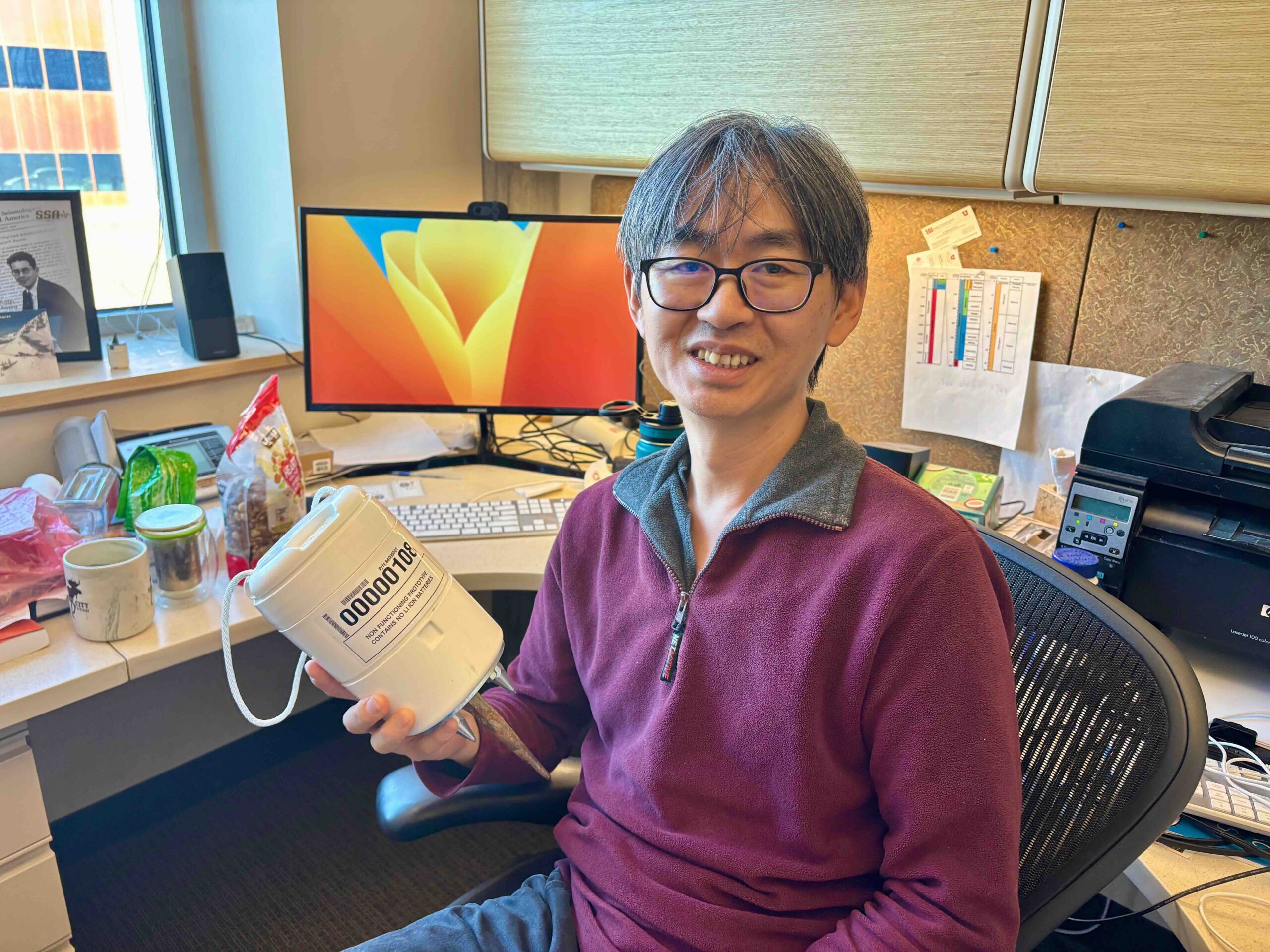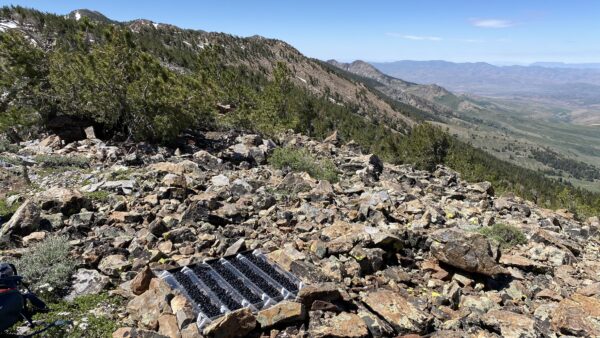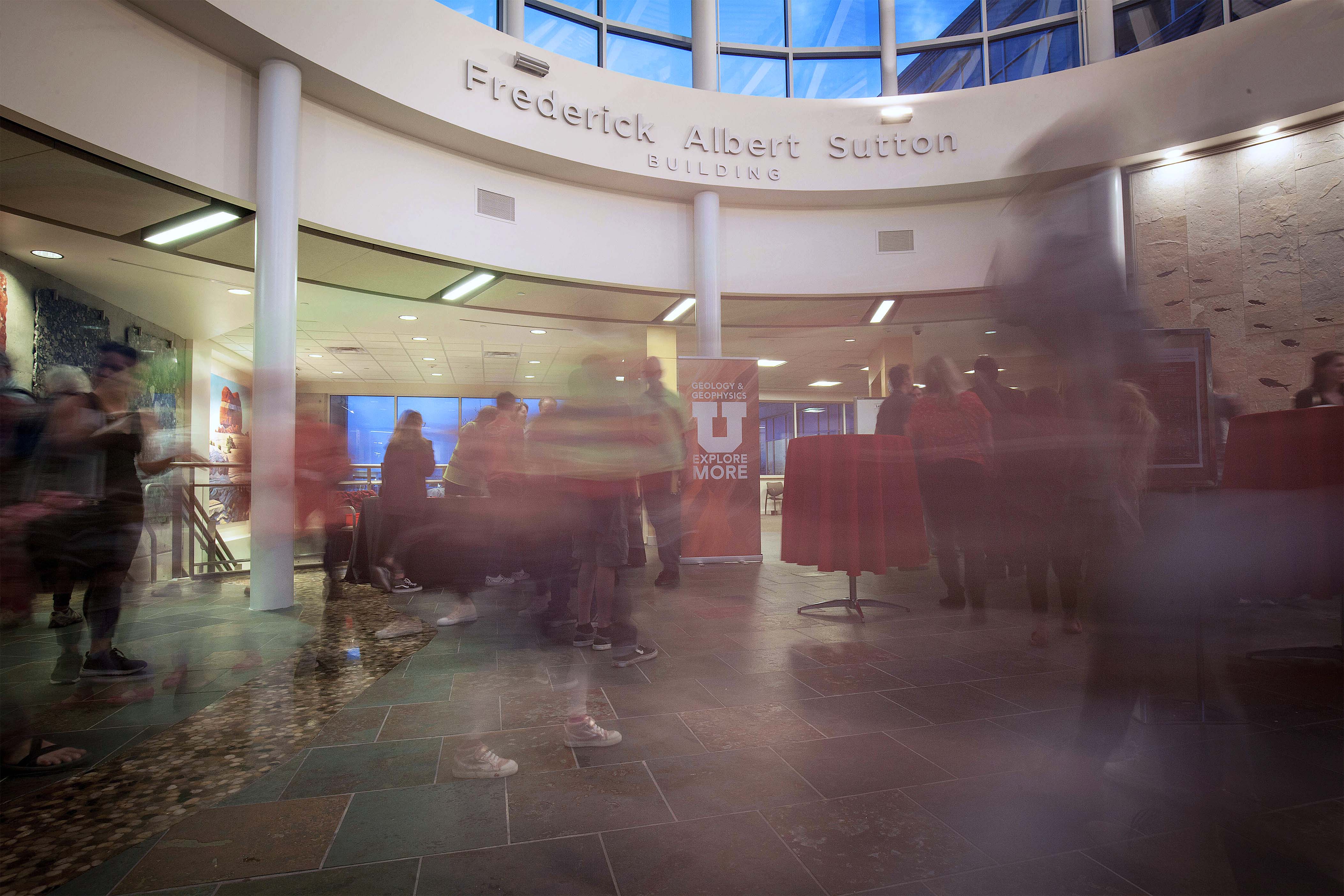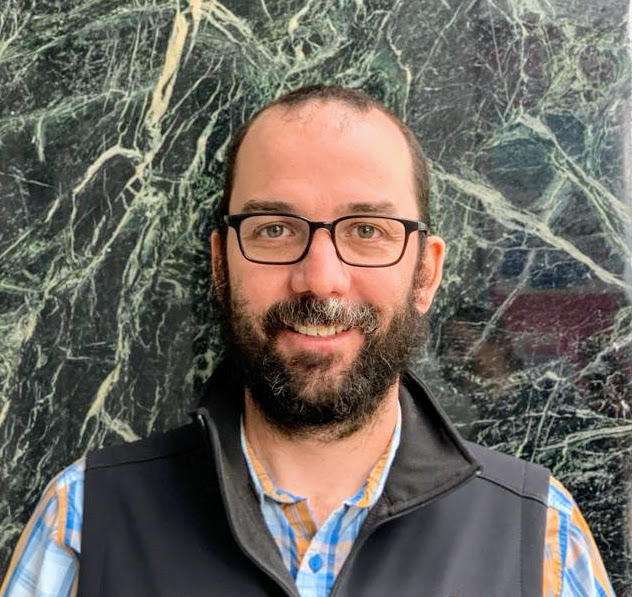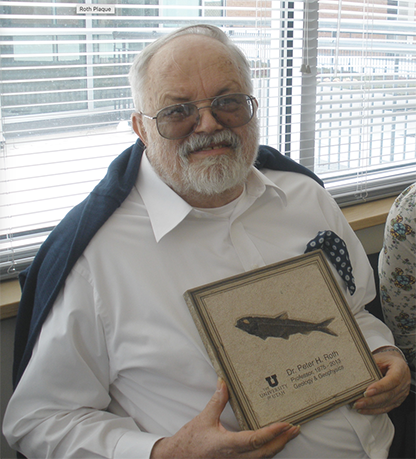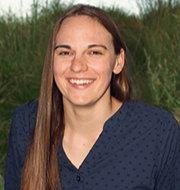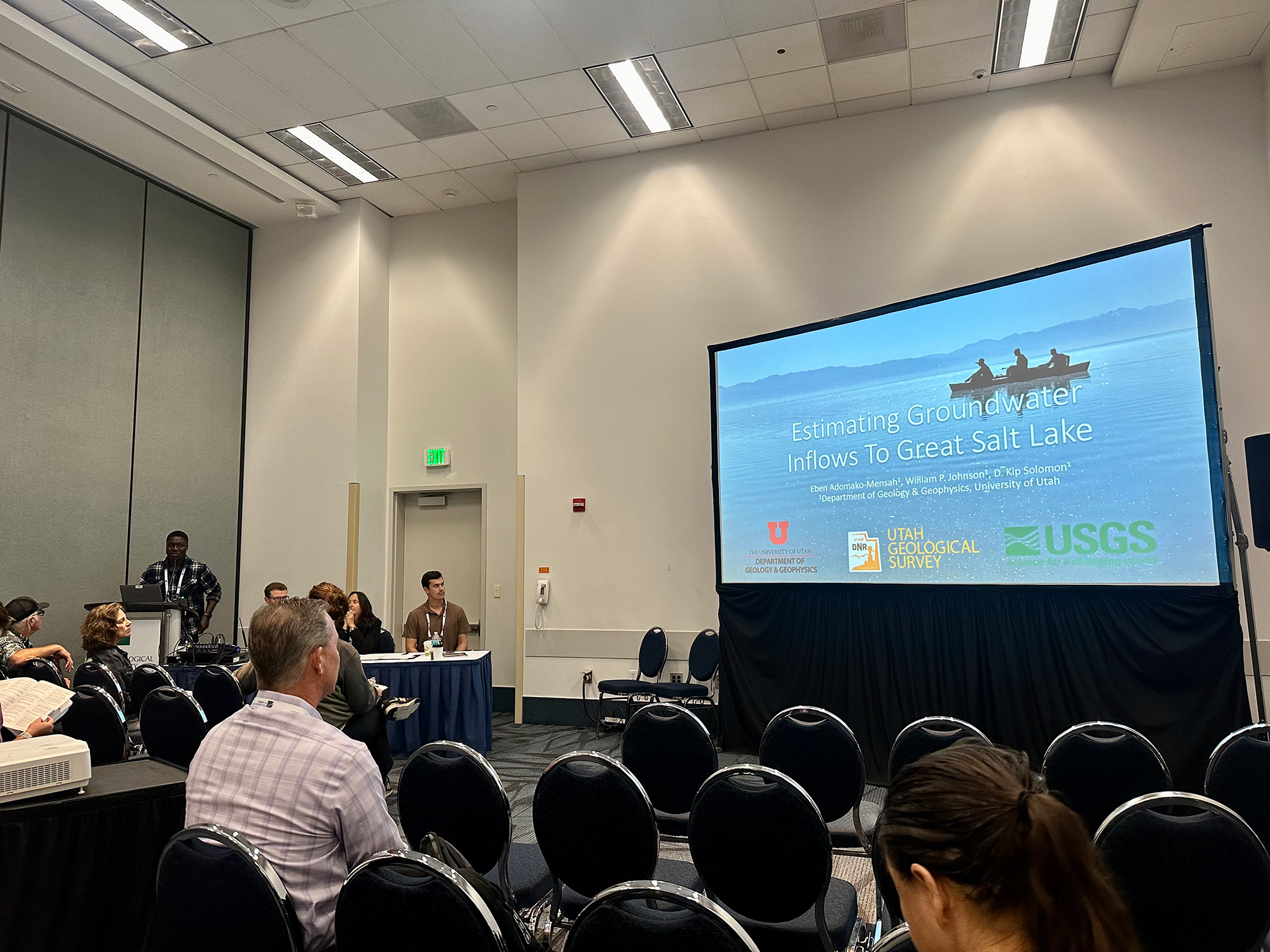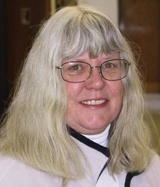NEWS
The ancestors of today’s crocodylians survived two mass extinction events. A new study uncovered a secret to their longevity, which could help conservationists better protect our planet’s most vulnerable species.
Photo: Randy Irmis faces off with a fossil Borealosuchus skull from the Natural History Museum of Utah’s collections.
Using Vibrations to See Into Yellowstone’s Magma Reservoir.
U geophysicists (Fan-Chi Lin & Jamie Farrell have located the top of the potentially explosive underground formation that drives Yellowstone's hydrothermal features.
Dust in the Wind: How cities alter natural airborne particles
Salt Lake's locally sourced dust pollution carries far more hazardous elements than natural dust blown in from Great Basin.

Please support Geology & Geophysics students and programs during the University of Utah's annual “Giving Day” campaign!
Please give early to help us surpass our goals. (Last year, Geology received 60 donors for a total of $57,450. Our goal this year is 75 donors and $60,000+ dollars.)
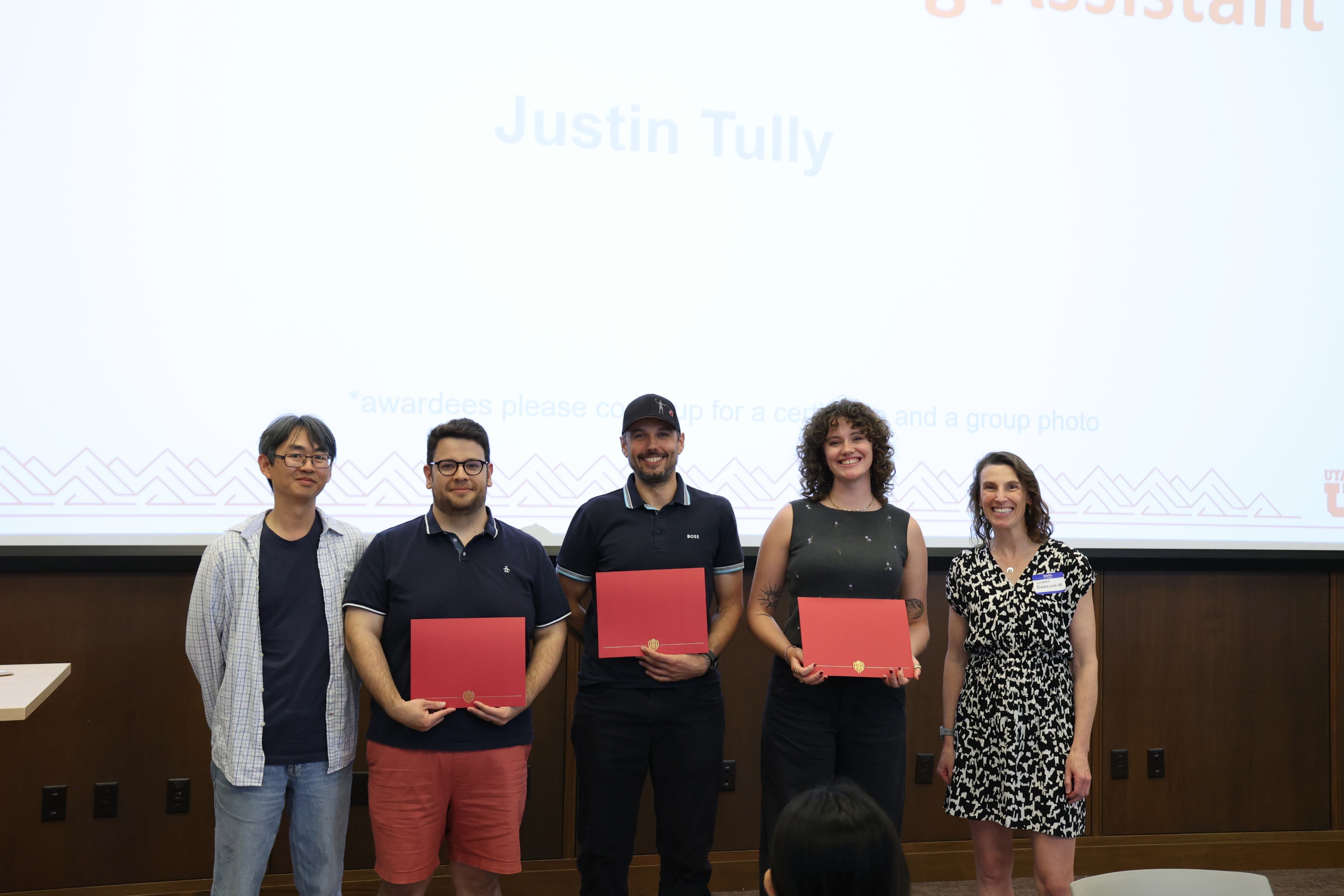
2025 Geology and Geophysics Annual Spring Awards Luncheon
Wednesday, April 23rd, 2025 at 12:00 PM in Crocker Science Center Room 206
RSVP is required by April 16th
One FREE ticket per each GG student, faculty, and staff. Family & Friend tickets are $5 each. Please pay in CASH by April 18th in FASB 383

Decoding Mysterious Seismic Signals
U scientists track mysterious ‘speed bumps’ deep inside the Earth. “These are some of the most extreme features discovered on the planet. We legitimately do not know what they are,” says Michael Thorne, associate professor of geology and geophysics.
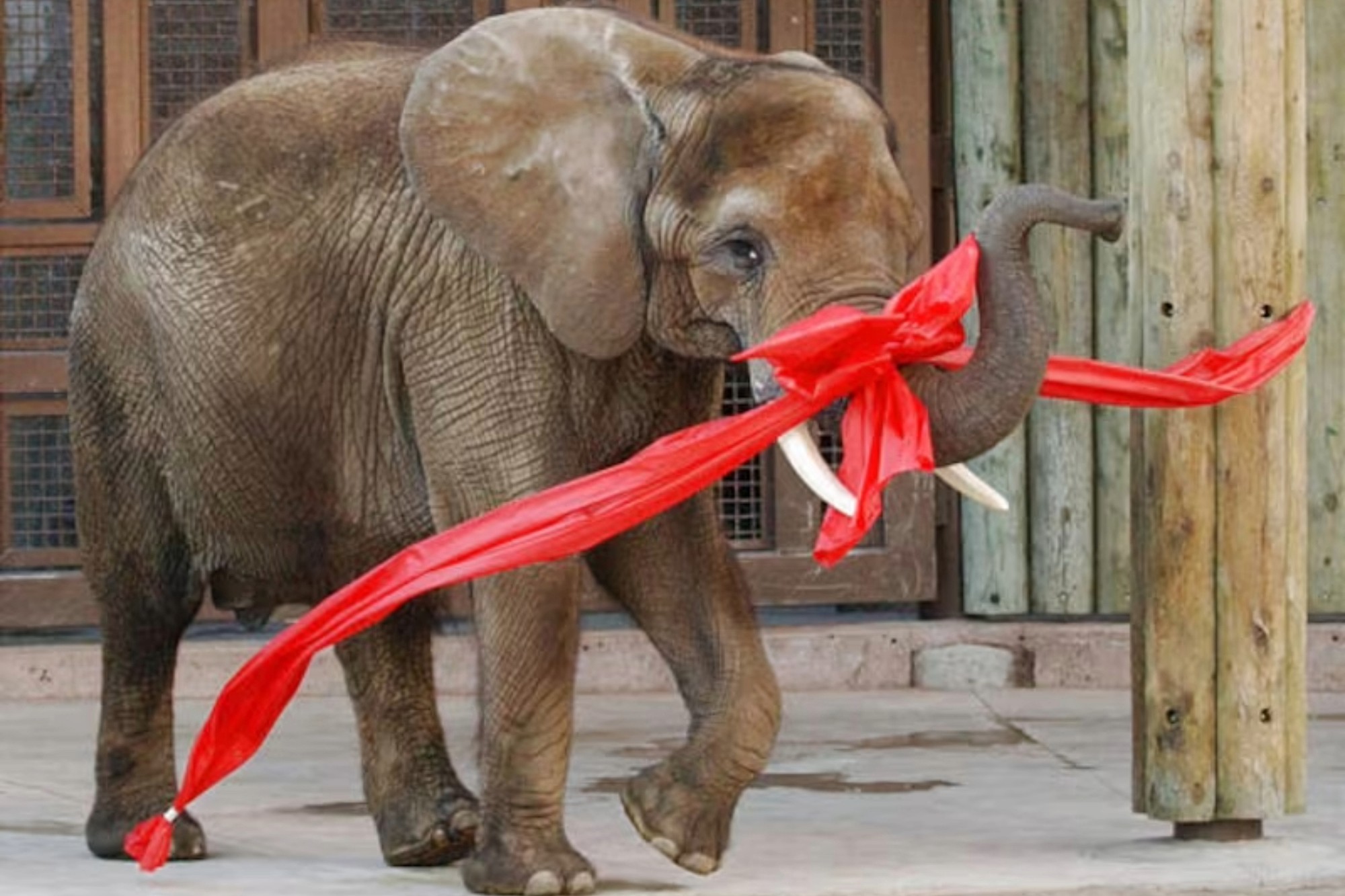
Teeth recovered from a beloved zoo elephant that died in 2008 are helping University of Utah geologists develop a method for tracking the movements of large herbivores across landscapes, even for animals now extinct, such as mastodons and mammot
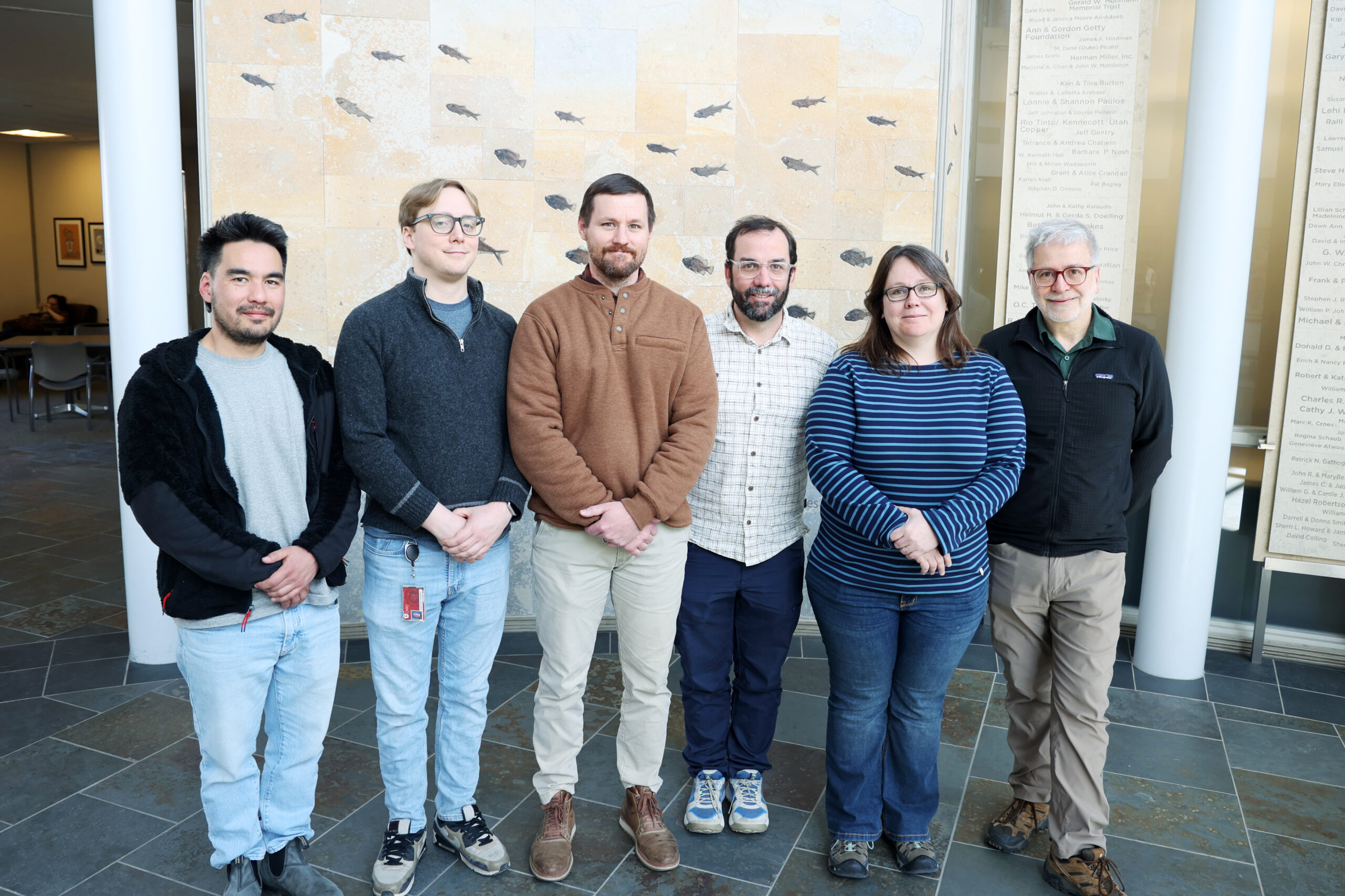
New State-of-the-Art Mass Spectrometer.
The U of U's Department of Geology & Geophysics has been awarded a million-dollar grant from the National Science Foundation (NSF) to acquire state-of-the-art mass spectrometry instrumentation for measuring isotope ratios of heavier elements at the precision needed to perform cutting-edge research into Earth’s deep past.
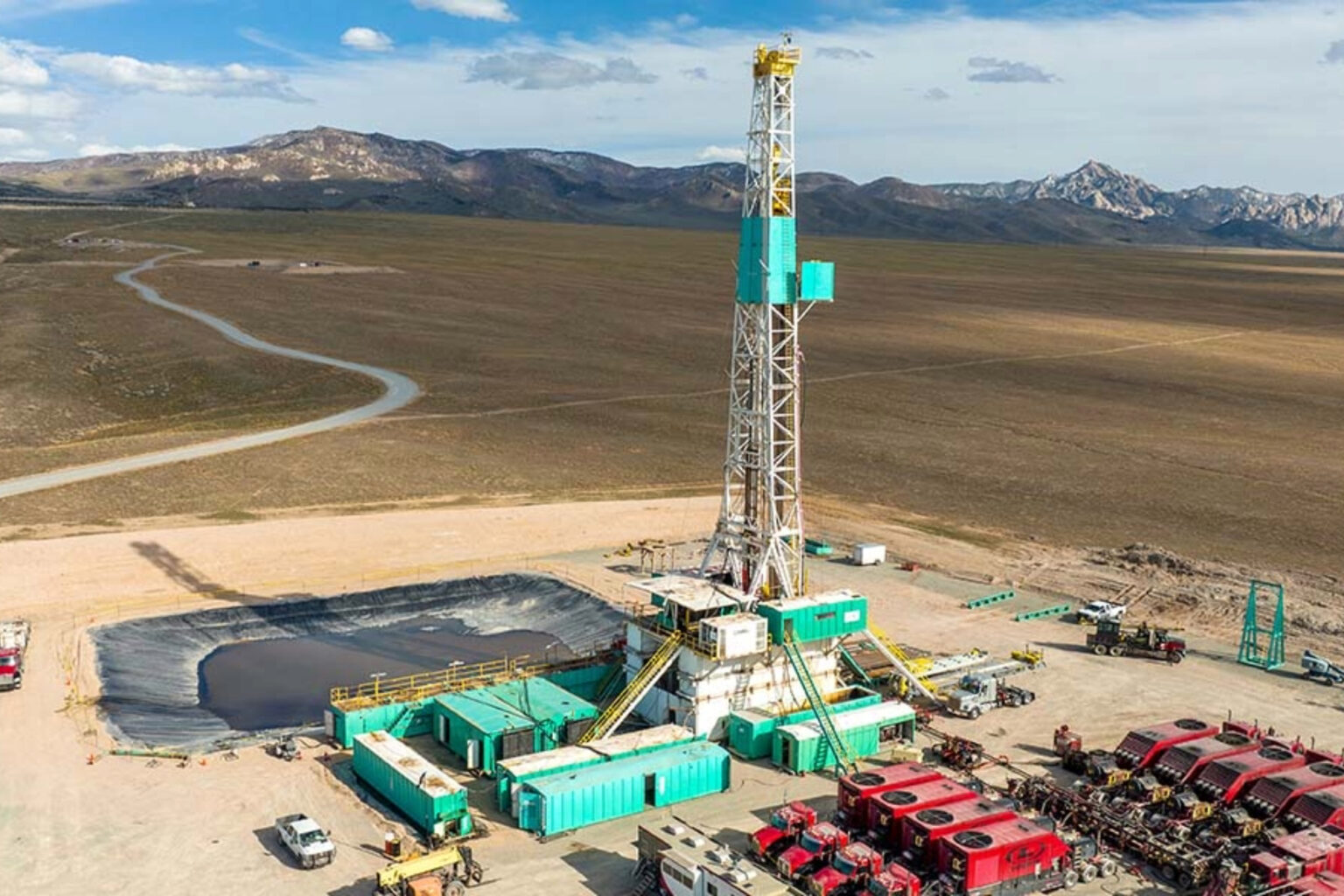
A Climate Moon Shot Beneath Our Feet.
North Milford Valley, in western Utah, is home to dormant volcanoes, subterranean lava deposits, and smatterings of obsidian—black volcanic glass—that Paiute peoples once collected for arrowheads and jewelry. Scalding groundwater still bubbles to the surface in places.
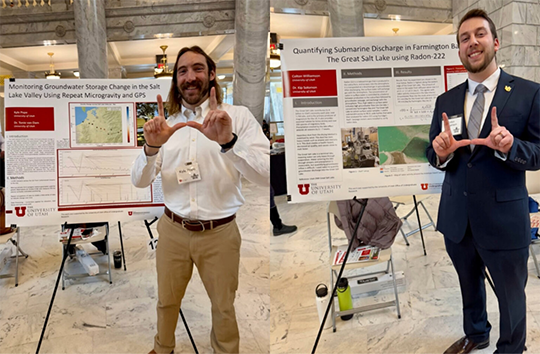
Geology Students Showcase Their Research at the 25th Annual Rsearch on Capitol Hill Event.
Last week, a select group of students from the U of U, Utah State, showcased their research to Utah state legislators and community members. This event offers a glimpse into the groundbreaking work happening in labs across the state and on the University of Utah campus.
Discover your future in Geology & Geophysics at the U!
Friday, February 28th, 2025 from 11:00 am - 1:00 pm
Frederick Albert Sutton Building Confluence (Main Entrance) - 115 S 1460 E, Salt Lake City, UT, 84112

Maybe Earth’s Inner Core is Not So Solid After All
The surface of Earth’s inner core may be changing, as shown by a new study led by University of Southern California and University of Utah scientists that detected structural changes near the planet’s center, published Monday in Nature Geoscience.
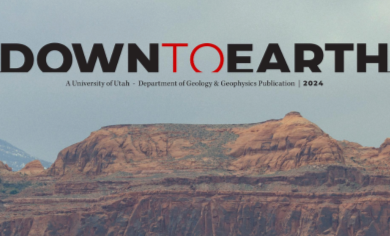 2024 Down to Earth Department Newsletter
2024 Down to Earth Department Newsletter
"It is my pleasure to report that the Department of Geology & Geophysics is thriving...I'm thrilled to share some highlights with you in this edition of Down to Earth". - Kip Solomon
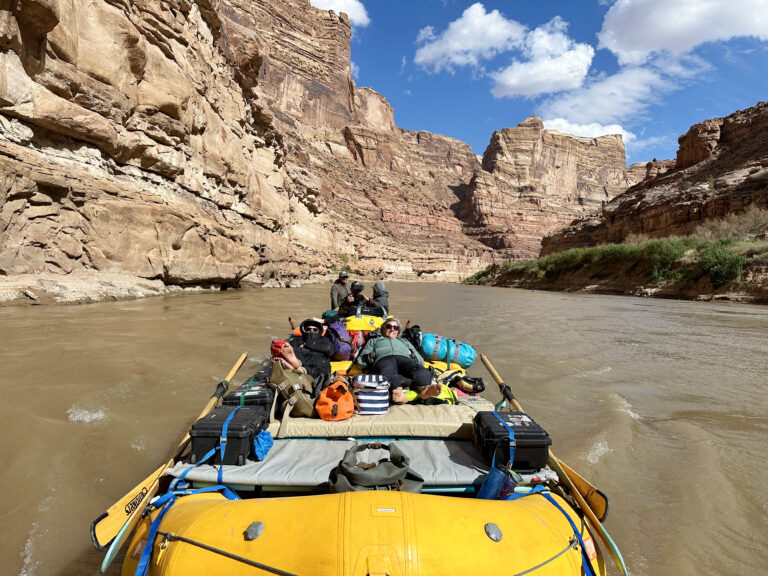 Unraveling the Changing Landscape of the Colorado and San Juan Rivers
Unraveling the Changing Landscape of the Colorado and San Juan Rivers
U of U geologists Cari Johnson & Brenda Bowen are at the forefront of a remarkable collaborative effort to understand the dynamic transformation of the river corridors entering the Lake Powell Reservoir, in particular the Colorado and San Juan rivers.
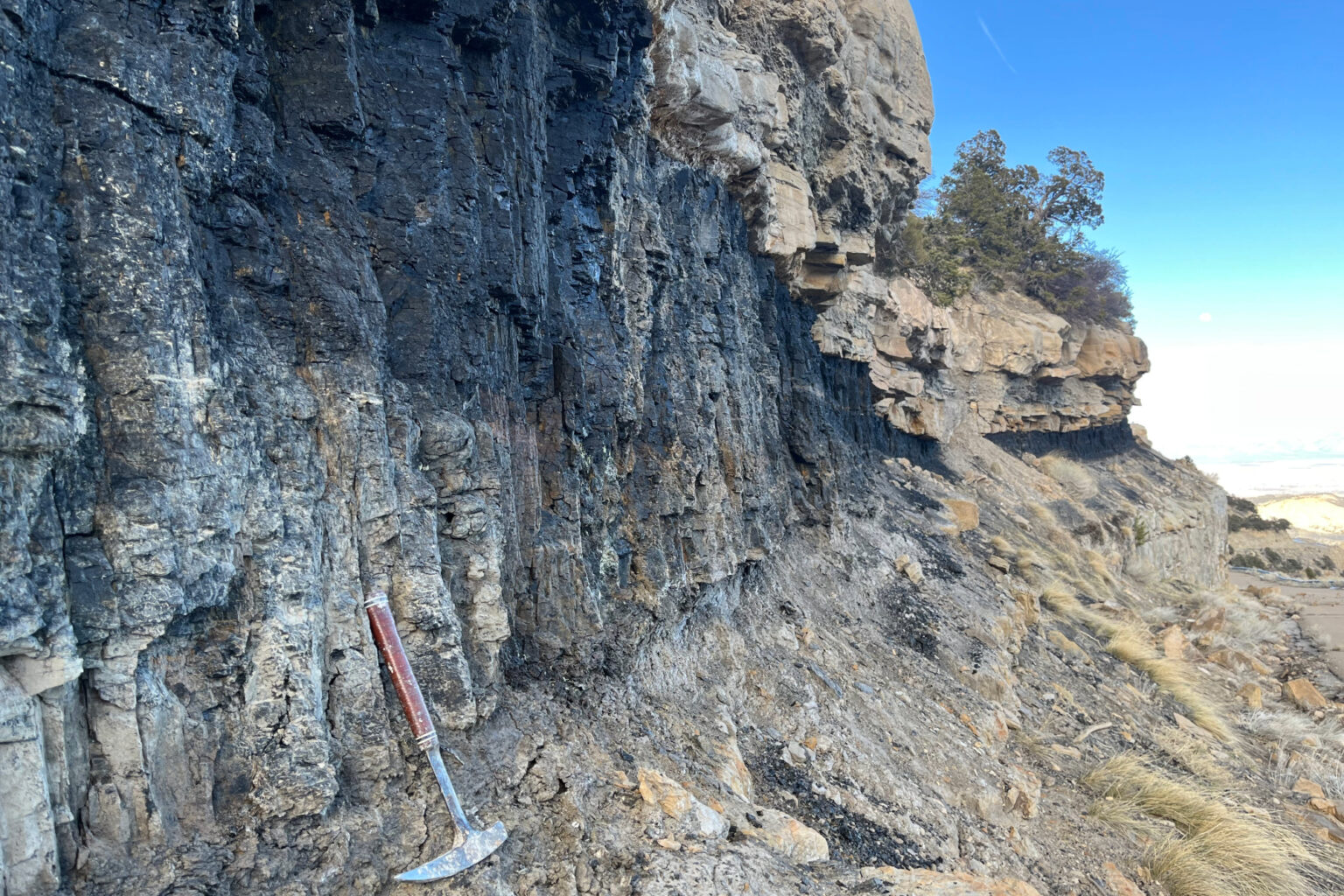 DOE Funding For Critical Materials Consortia.
DOE Funding For Critical Materials Consortia.
“Rebuilding a domestic supply chain for critical minerals and materials here at home will both safeguard our national security and support the continued development of a clean energy and industrial economy,” says Brad Crabtree, Department of Energy (DOE).
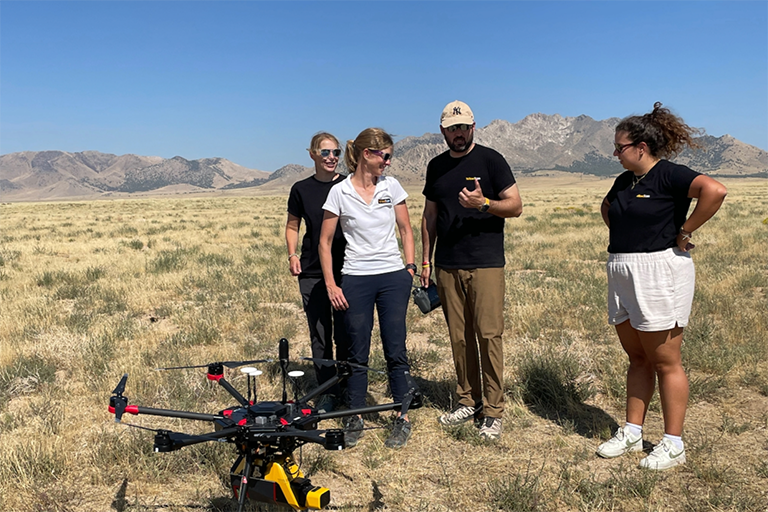 FORGE Workshop with Alumna Anke Friedrich.
FORGE Workshop with Alumna Anke Friedrich.
The good news for the Utah Frontier Observatory for Research in Geothermal Energy (FORGE) managed by the U is that with an additional $80 million in funding from the Department of Energy, the project is fully funded through 2028.
Juan Carlos de Obeso is the co-author of a new article about enhancement of carbon dioxide mineralization in basalts as a tool for CO2 removal from the atmosphere.
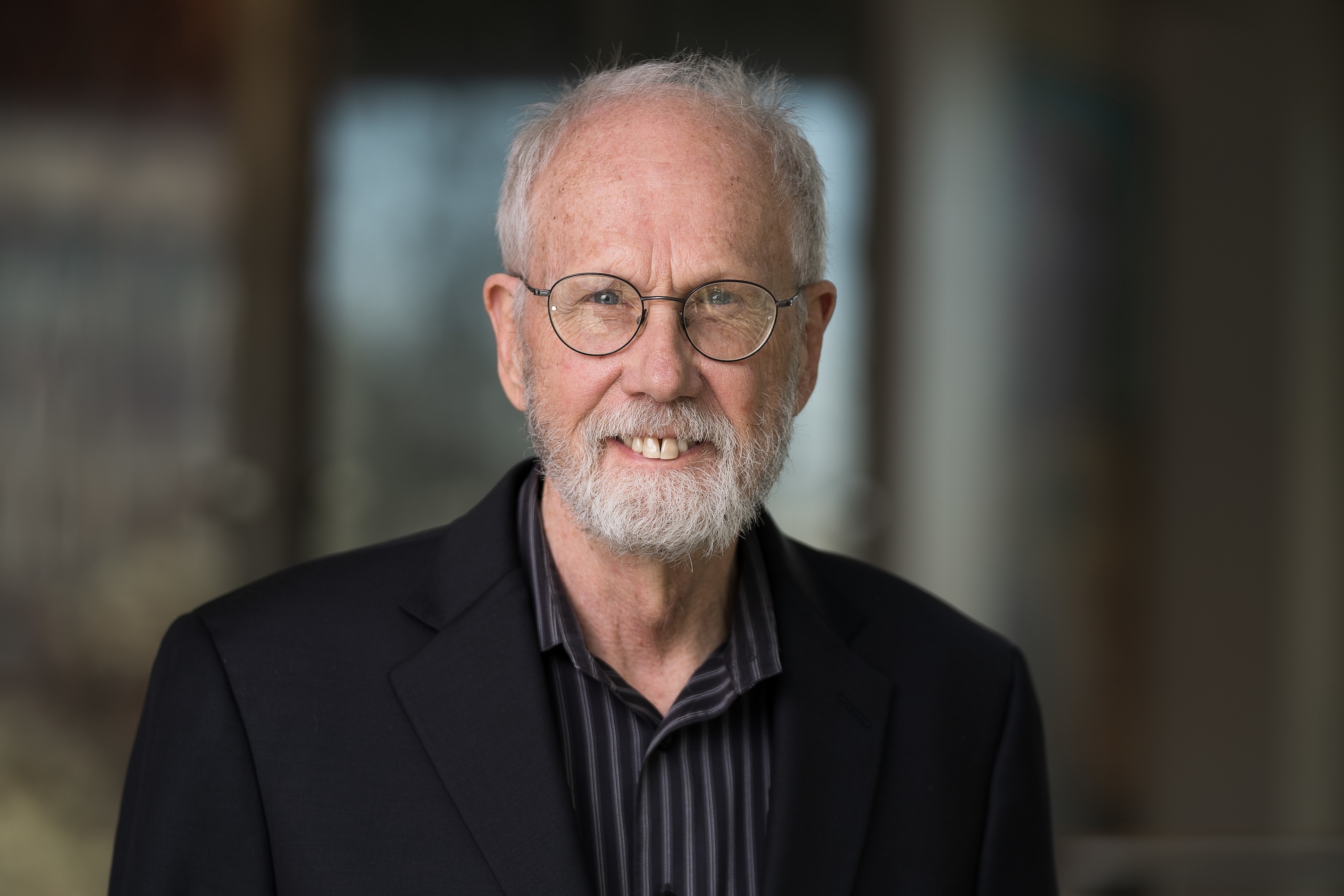 Save the Date: You are invited to a celebration of Thure Cerling’s career: Isotopes,
Elephants, Lewis Carroll and More: A Thure Cerling Retrospective.
Save the Date: You are invited to a celebration of Thure Cerling’s career: Isotopes,
Elephants, Lewis Carroll and More: A Thure Cerling Retrospective.
This event will take place on Saturday, May 10, 2025 on the campus of the University of Utah in Salt Lake City. Full program details will be announced in January, 2025.
Dr. Peter H. Roth, retired associate professor of the Department of Geology & Geophysics- University of Utah, passed away on October 26, 2024.
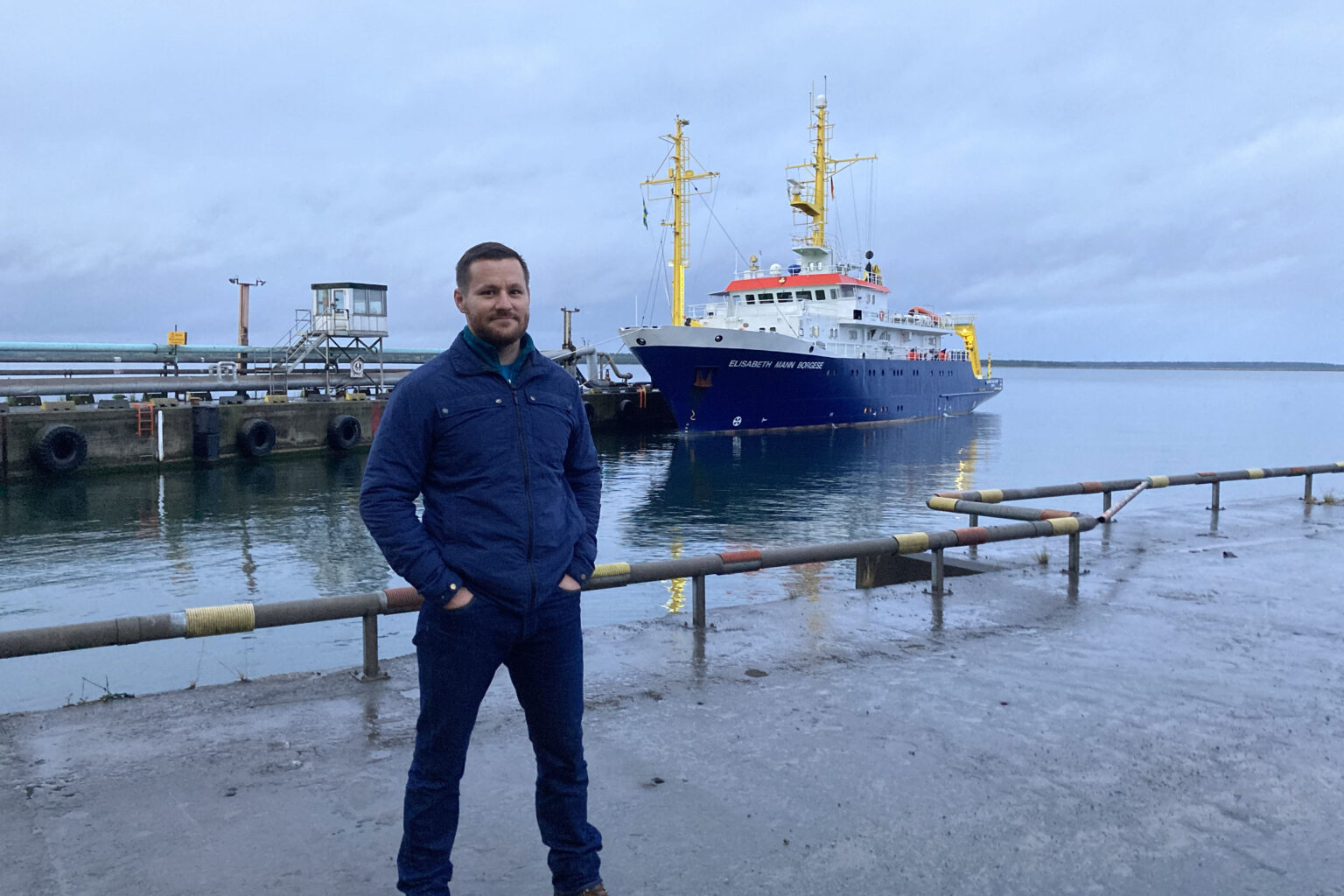 Veterans Day - Humans of the U: Chad Ostrander
Veterans Day - Humans of the U: Chad Ostrander
After my job as a pipe-layer and a stint as an old-West reenactor in Tombstone, I moved back to Oregon in the summer of 2007 to work as a dock hand at Crater Lake National Park. It was from here that I decided to join the military.
 A dino-mite addition to SLC International Airport
A dino-mite addition to SLC International Airport
“Utah is known for its dinosaurs. We hope this inspires visitors and locals to explore the really cool dinosaur heritage of our state.” - Randy Irmis, curator of paleontology at NHMU and professor of geology at the University of Utah.
“One of the things I love about hydrology is that it’s something that everybody has a connection to,” says Sara Warix. “We all consume it every day, we’re all impacted by the weather, many of us use it for work or play. However far you get into the weeds of geochemistry or physics, you can always connect water back to people.”
We had an incredible time at GSA this year! We had several students present their research, we had students, faculty, and alumni win awards, and had a great alumni reception.
 University of Utah Geology and Geophysics Virtual Graduate Student Recruiting Event.
University of Utah Geology and Geophysics Virtual Graduate Student Recruiting Event.
Click the link above for details on our virtual recruiting event. RSVP here.
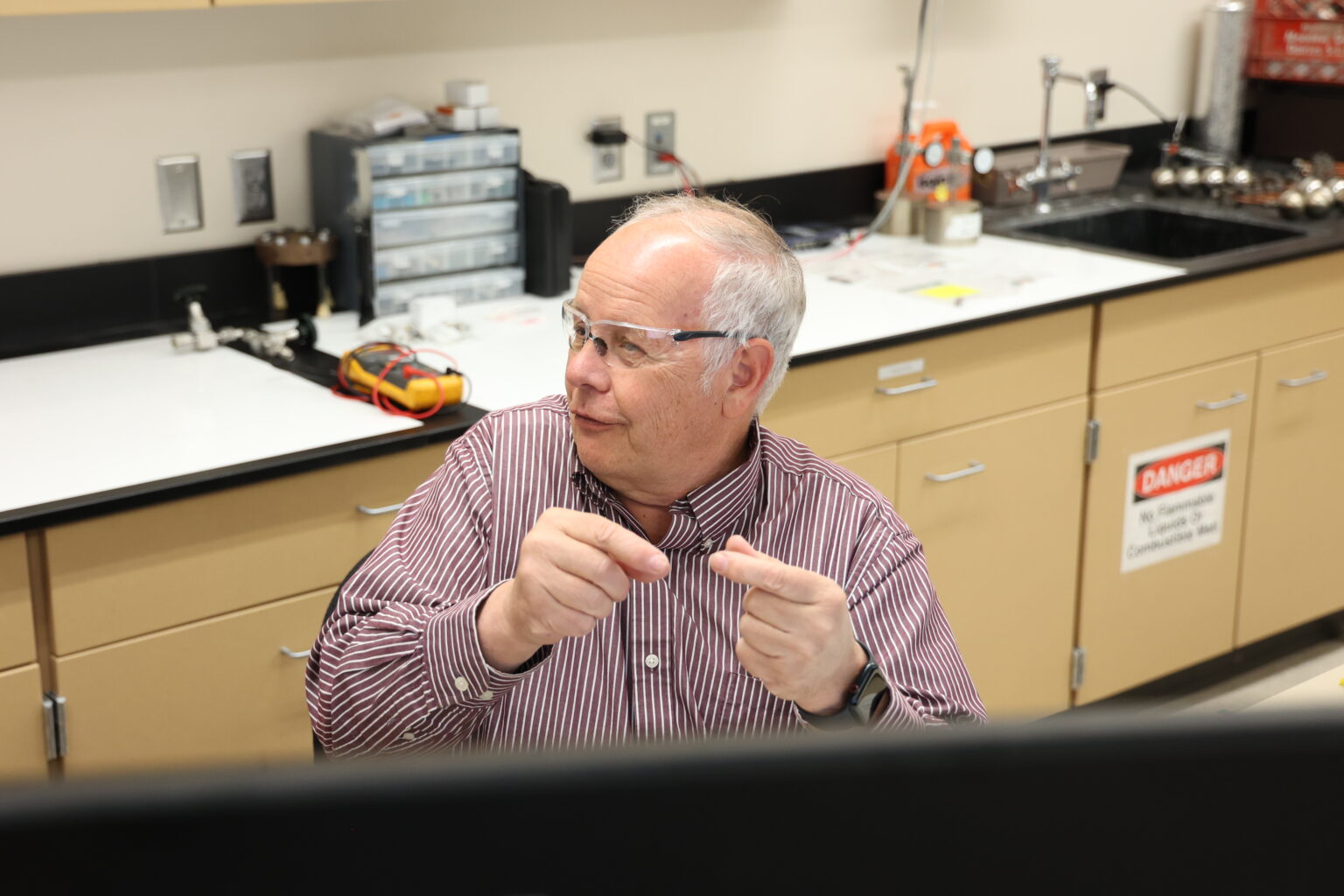 Kip Solomon's Covenant with Water & Winning the Meinzer Award.
Kip Solomon's Covenant with Water & Winning the Meinzer Award.
If anyone has the authority to make policy and practical management suggestions related to groundwater, it is Kip Solomon.
 Utah Forge Receives $80 Million to Continue the Project Through 2028.
Utah Forge Receives $80 Million to Continue the Project Through 2028.
An agreement has been signed between the U.S. Department of Energy & the Utah Frontier Observatory for Research in Geothermal Energy (informally known as Utah FORGE) to continue the project through 2028.
 AGI Earth Science Week Webinar with G&G's James Karner - "Earth Science at the Poles".
AGI Earth Science Week Webinar with G&G's James Karner - "Earth Science at the Poles".
The webinar will be on Thursday, October 17th, click the link above for more information.
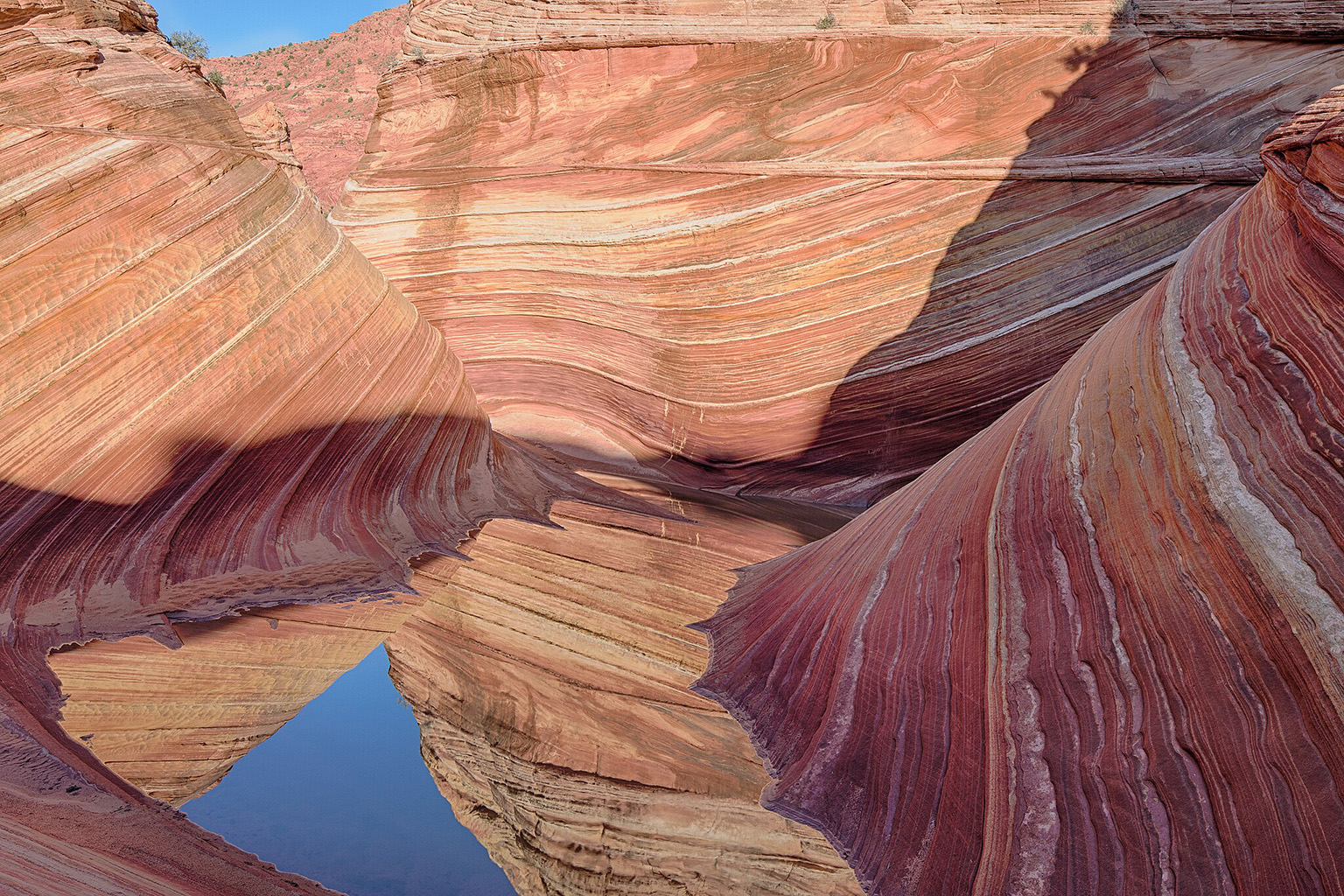 How Features in Utah and Arizona Advanced Geoscience.
How Features in Utah and Arizona Advanced Geoscience.
U geoscientists nominated Henry Mountains, Coyote Buttes and Great Salt Lake to the list of world's top geoheritage sites.
 Honoring Fallen Soldiers: How Science is Using Teeth to Bring Families Closure.
Honoring Fallen Soldiers: How Science is Using Teeth to Bring Families Closure.
Subtle differences in tooth chemistry could help determine the identity of fallen soldiers and other human remains—if we can learn to read that history.
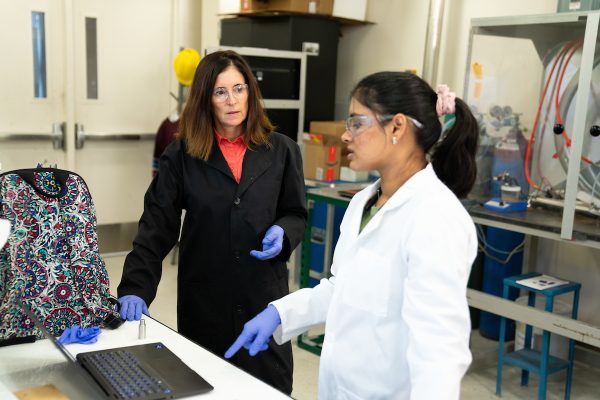 Just How Dangerous is Great Salt Lake Dust?
Just How Dangerous is Great Salt Lake Dust?
U scientists determine sediments from the dry playa have elevated 'oxidative potential,' indicating greater risk to human health.
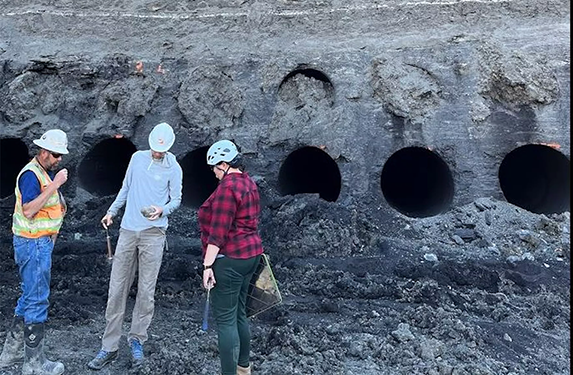 Extracting Rare Earth Elements From Existing Coal Mines - The Cool Science Radio Podcast.
Extracting Rare Earth Elements From Existing Coal Mines - The Cool Science Radio Podcast.
Dr. Lauren Birgenheier, associate professor of geology and geophysics at the University of Utah, discusses this potential new source. Listen today at the link above.
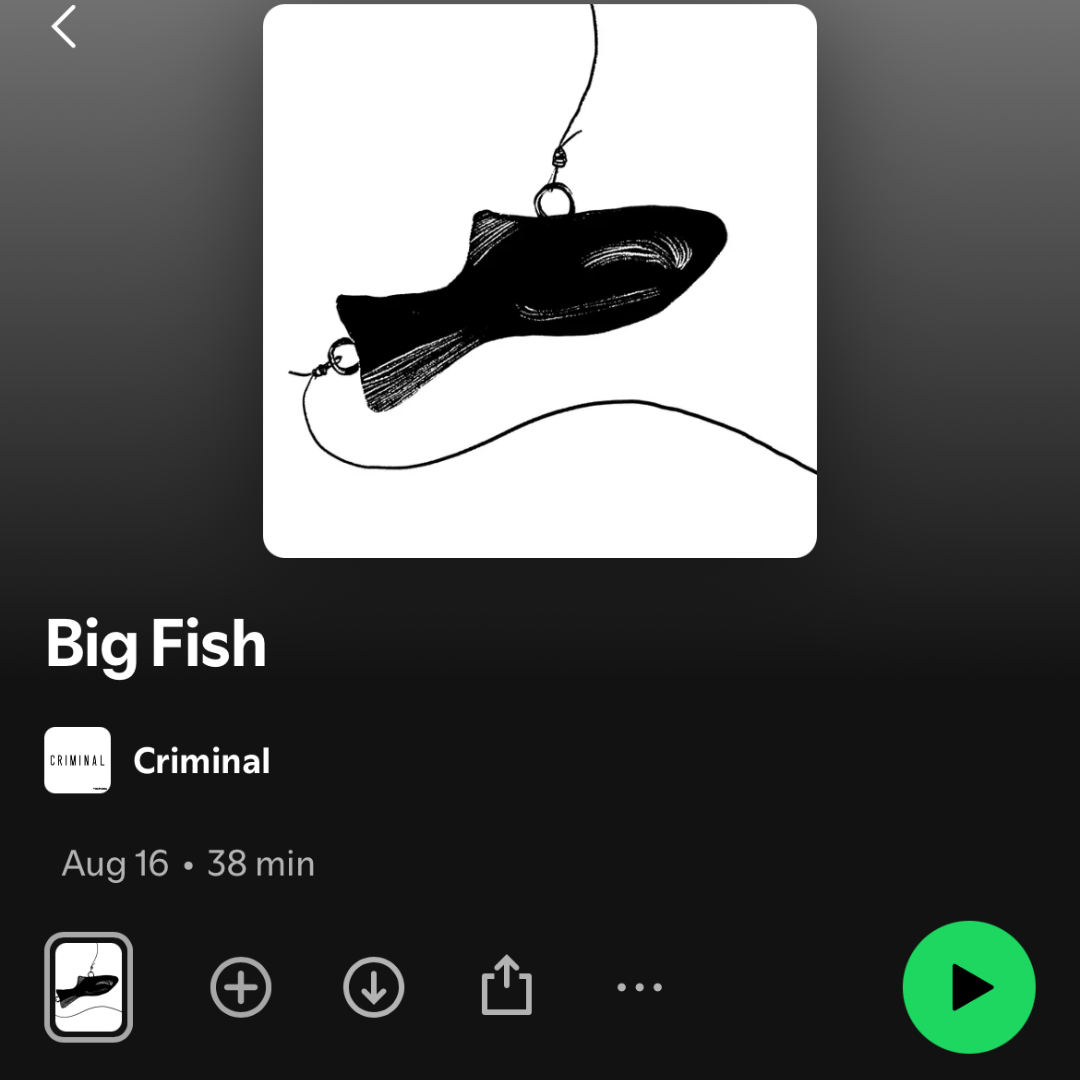 Fish Tournament Fraud in Lake Powel Reveled by UofU Geo Lab Turned Into a Podcast!
Fish Tournament Fraud in Lake Powel Reveled by UofU Geo Lab Turned Into a Podcast!
Fish tournament fraud in Lake Powell revealed by strontium isotopes measured at the ICPMS lab in our department has been turned into a podcast. Listen today at the link above.
 Elevating Public Understanding of Geoscience
Elevating Public Understanding of Geoscience
Marjorie Chan, Distinguished Professor Emerita at the Department of Geology and Geophysics at the University of Utah, is the 2024 recipient of the Outstanding Contribution to the Public Understanding of the Geosciences award.
 What Microsopic Fossilized Shells Tell us About Ancient Climate Change.
What Microsopic Fossilized Shells Tell us About Ancient Climate Change.
Highlighting Professor Gabe Bowen, and postdoctoral researcher Dustin Harper, and their latest ancient climate research that links rising CO2 in the ocean 50 million years ago with dramatic climate change.
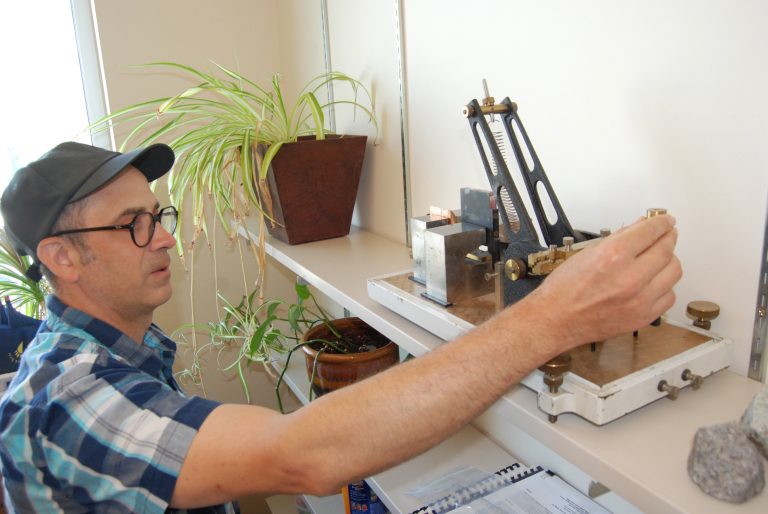 Decoding Mysterious Seismic Signals
Decoding Mysterious Seismic Signals
Utah geophysicists, including University of Utah Geology and Geophysics Associate Professor Michael Thorne, find link between seismic waves called PKP precursors and strange anomalies in Earth's mantle.Live Science Article.
STEM-focused colleges from around campus are coming together to host the University of Utah STEM Safety Day on Friday, Sept. 6, from 8:30 a.m.-4 p.m. at the Cleone Peterson Eccles Alumni House. This free event is open to all researchers, staff, students and faculty in U of U Health and the broader campus to brush up on best practices in safety and well-being. Register at the link above.
Dr. Susan ‘Sue’ Halgedahl, Associate Professor Emerita in the University of Utah’s Department of Geology & Geophysics, who specialized in magnetic domain states, fine-particle magnetism, and Middle Cambrian fossils of western Utah, died June 2024. She was 77.
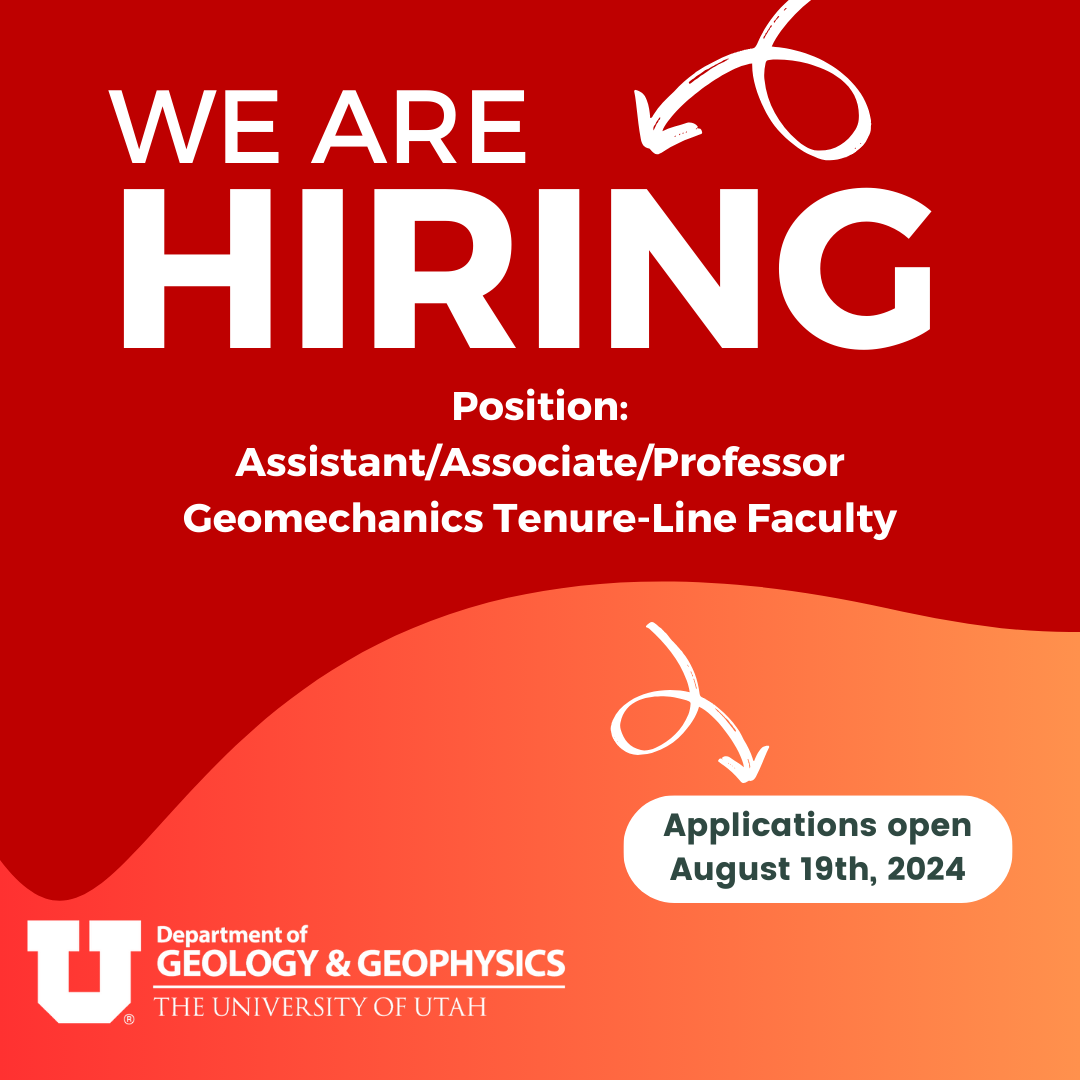 We are hiring an Assistant/Associate/Professor of Geomechanics.
We are hiring an Assistant/Associate/Professor of Geomechanics.
Applications open on 8/19/24. We invite applications for an open-rank faculty position in the area of geomechanics, with emphasis on rock and fracture mechanics, fracture networks, and/or fracture characterization and modeling.
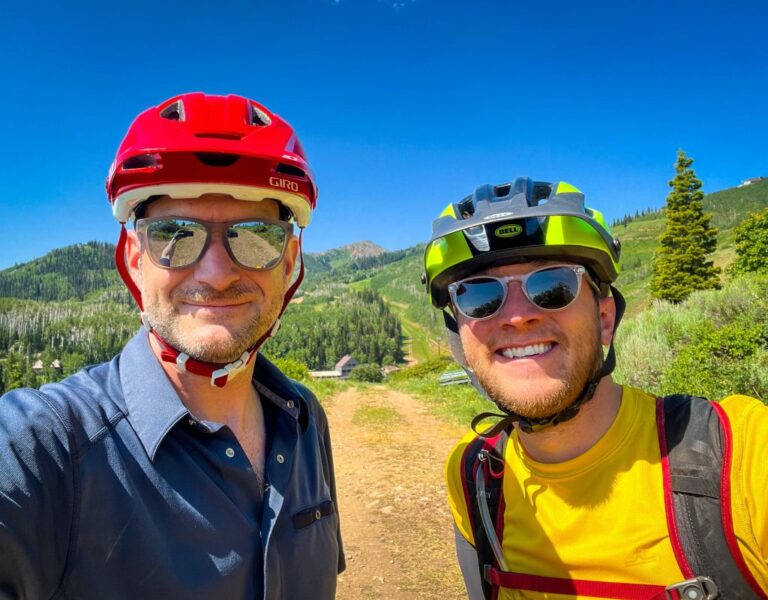 What do cycling and rocks have to do with each other?
What do cycling and rocks have to do with each other?
University of Utah geologists Peter Lippert and Sean Hutchings are helping bring attention to the hidden star of a major sporting event this summer.
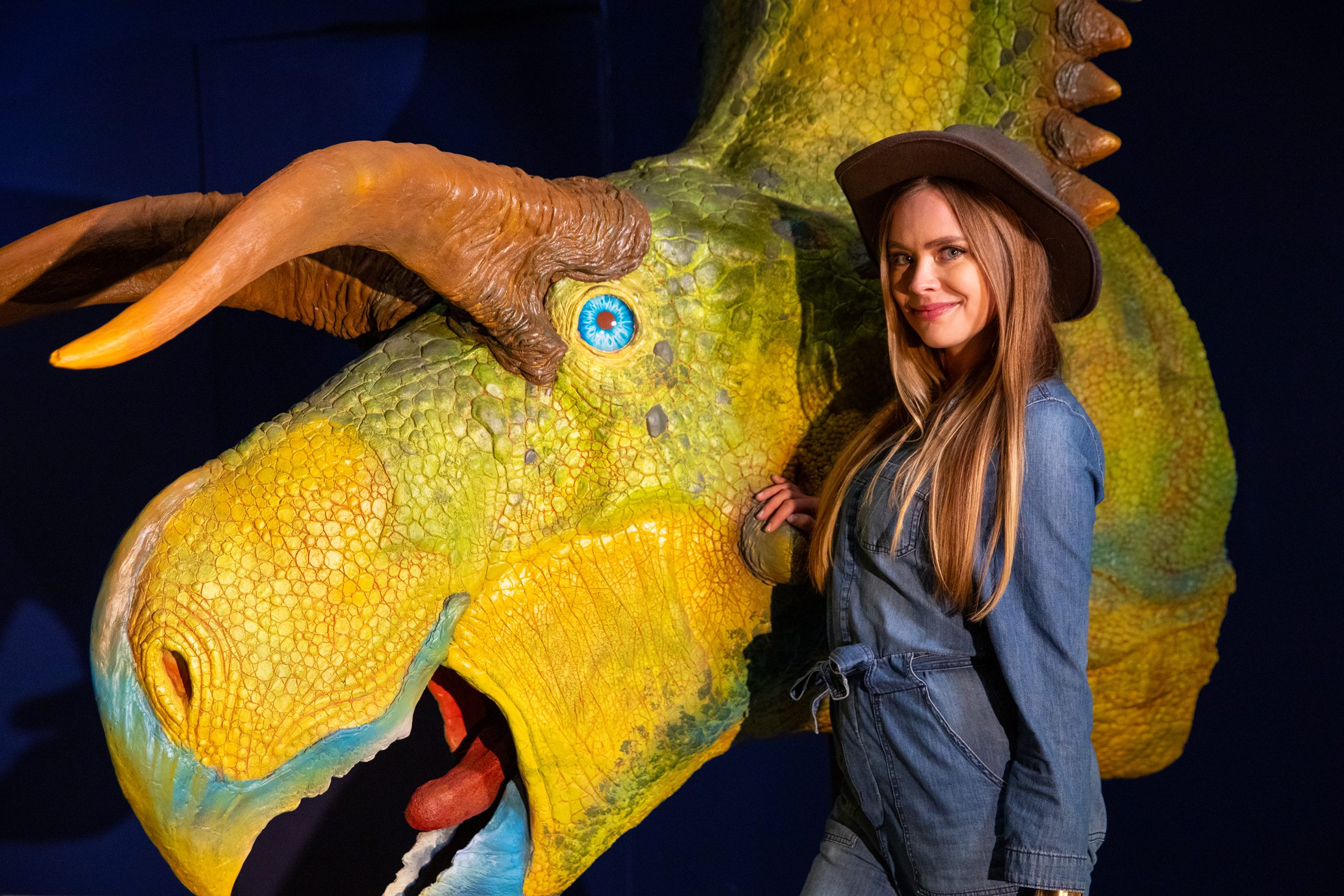 From volunteer to co-author: One U student’s dinosaur journey.
From volunteer to co-author: One U student’s dinosaur journey.
Savhannah Carpenter’s route to being the only student listed on the research team credited with finding the world’s newest horned dinosaur didn’t follow a straight line.
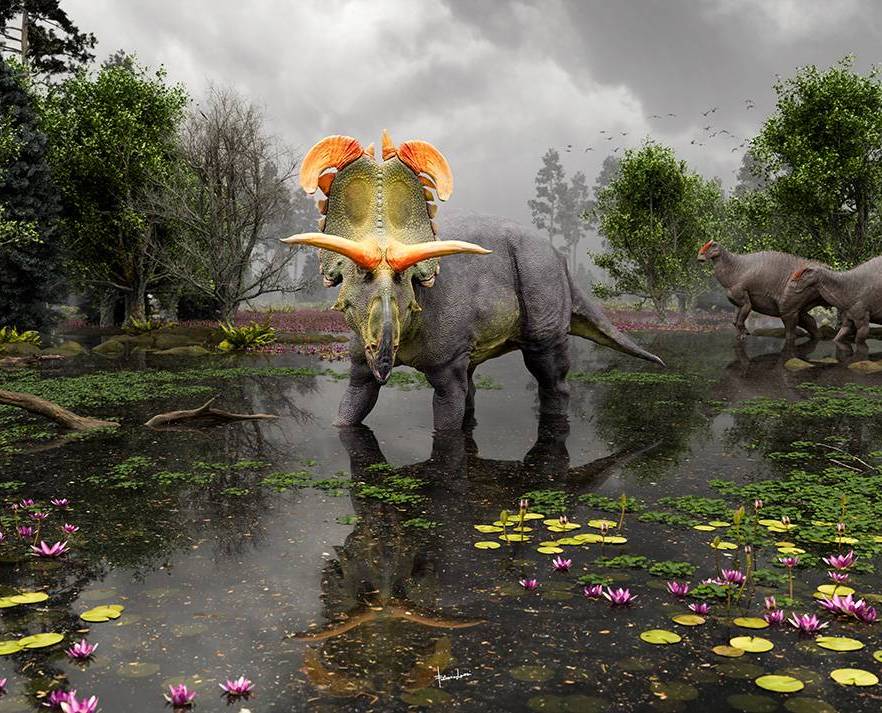 Loki’s horned dinosaur wielded a pair of giant blades.
Loki’s horned dinosaur wielded a pair of giant blades.
A remarkable, new species of horned, plant-eating dinosaur is being unveiled at the Natural History Museum of Utah.
 As the ball turns: Earth’s inner core is ‘backtracking’.
As the ball turns: Earth’s inner core is ‘backtracking’.
Using seismic data to measure changes in solid core's motion, geologists discover it now turns more slowly relative to surface of Earth.
 What the Geologic Record Reveals About How the Oceans Were Oxygenated.
What the Geologic Record Reveals About How the Oceans Were Oxygenated.
New research led by U geochemist uses thallium isotopes to track the rise and fall of free oxygen on Earth 2.5 billion years ago, the process that enabled life as we know it.
Archive
- Kip Solomon has been selected as the new interim chair of the Department of Geology and Geophysics at the University of Utah.
- Breakthrough in Geothermal Energy at Utah FORGE
- Can Coal Mines Be Tapped for Rare Earth Elements?
- Changing Chemistry of the Baltic Sea
- From Mountains to the Great Salt Lake: The Secrets of Snowmelt
- Busy as a Beaver: Utah Forge
- Sizing up Courthouse Crack
- Utah’s Bonneville Salt Flats Has Long Been in Flux
- New Tyrannosaurus Species
- At Work: HyeJeong Kim
- Young Basalt in drill cores from the island of Surtsey, Iceland
- Magma Found Beneath Volcano-Less Country.
- Podcast: Can We Bury Modern CO₂ in Utah's Ancient Sand?
- New NSF-Funded Initiative for Regional Climate Solutions
- Margaret Call: Pathfinder
- Frank Press Public Service Award
- Podcast: Measuring CO2 Levels Over the Past 66 Million Years
- Mutton, an Indigenous Wooly Dog
- Remembering Alan Rigby
- Randall Irmis: Fulbright Award
- Bones of the Earth
- Brenda Bowen: New chair of ATMOS department
- Roseblatt Prize: Thure Cerling
- Remembering Hellmut Doelling
- Remembering Marta Weeks
- Isotopes: Science's Common Currency
- A Fossil's Journey to Harvard
- Meteorite hunting in Antarctica
- Anke Friedrich inducted into Crimson Club Hall of Fame
- Estudiante mexicano se destaca en doctorado en Geofísica en la Universidad de Utah
- Remembering David Chapman
- U adjunct professor nominated to lead US geological Survey
- A love letter to science
- U geoscientist sails on Arctic Research Cruise

